I have been more active in recent weeks with my bird photography in my backyard area, nearby parks and other places. Here are some recent favorites.
Wood Duck family
I have seen this flight of Wood Ducks on the big pond at the former Kings Grant golf course.
In sharing some of these photos on social media I learned that the strikingly colorful male of this species doesn’t stick around to help mama raise the youngsters.
Other research revealed something else I did not know- that Carolina Duck is another name for this duck.
A majestic Great Blue Heron stands at attention…
Great Egret- Another tall long-necked wading bird. Check out those beady eyes 👀 looking right at me!
Note in the photo below the brown head of the Brown-headed Cowbird.
American Crow
Next is a Double-crested Cormorant.
I tried to give this image a spooky effect with Snapseed processing.
Common Moorhens
I recently learned that this lovely chap with its "daggerlike bill" (All About Birds), common in S.C. Lowcountry marshes, swamps and ponds is also called the “Devil Bird.”
Now I knew the Anhinga was known as Snake Bird for what you see in this photo. Note the striking blue around the eye! They are also called Turkey Birds for their turkey-like tails.
I came across recent media coverage from New York City that said how some Anhingas have been spotted in Brooklyn, far north from their usual range. And the headline said something about “Devil Birds” being seen.
Here’s the scoop from All About Birds. The name Anhinga comes from the Tupi Indians of Brazil for devil bird or “evil spirit of the woods.”
Killdeer is a large colorful member of the Plover family. My ears did not catch it but the name comes from the bird’s high-pitched call that sounds like “kill deer.”
Not sure about this Butterfly- might be a Black Swallowtail. It is. I confirmed on a Carolina “Leps” Facebook site for Butterflies and Moths.
BEACH BIRDS
I believe these Red Knots to be a lifer bird for me! I photographed them recently on the beach at Sullivan’s Island. I used one of my many bird resource books to help with the identification then used a “What's This Bird?” Facebook site to confirm.
Red Knots are described as plump, neatly proportioned Sandpipers. All About Birds also says “ This cosmopolitan species occurs on all continents except Antarctica and migrates exceptionally long distances, from High Arctic nesting areas to wintering spots in southern South America, Africa, and Australia.” These Red Knots must be on the return route from South America to the Arctic. That's some journey, a 19,000 mile trek according to the newspaper piece linked below this next photo.
Here is a pair of Sanderlings, a shorebird I’m pretty sure I have photographed these small plump sandpipers in the past at the beach. A single Sanderling (below) examines dead jelly fish on the beach.
MAGNOLIA CEMETERY- CHARLESTON
Pileated Woodpecker- Had a pair together in the backyard. I only was able to get a couple shots before they were gone. I do see these big “Woody Woodpeckers” time to time in my neighborhood.
This next photo I took with my iPad on the back porch while reading the newspaper. The Pileated Woodpecker is on the tree in the middle of the frame.
Red-bellied (left) and Downy Woodpeckers- enjoying our feeder food. Pretty cool to get this image of the two types together like this!
Northern Cardinal
Next- surprise sighting of Spring 2023!
Great-crested Flycatcher- I did a post just about an exciting encounter in my front yard with a bird that is not one of the “regulars.” See the post here.
Several families visit our backyard to pick at the droppings from my many bird feeders. Droppings these geese leave behind have me carefully watching my step back there.
They grow so fast!
Heading to the water.
Great Blue Heron is on the bank…
Then takes off as the chevron (or flock or string) of Canada Geese approach.
I read an interesting fact about Canada geese that they can cover 1500 miles flying in one day and can fly 40 mph and even 70 mph if caught in a nice wind stream.
Downy Woodpecker- Getting a beak full of suet at my feeder.
This Downy has not red on the head so must be a female.
Little Blue Heron- I frequently see this lovely bird by the pond near my backyard.
SCENERY
All of these photos are from the park at Kings Grant.













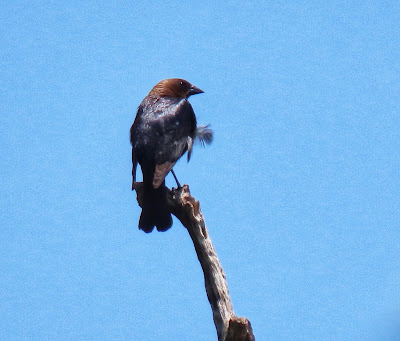

























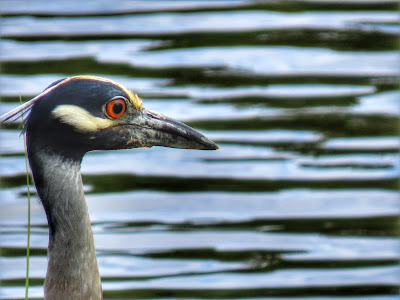






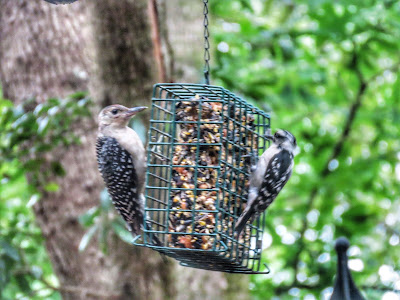




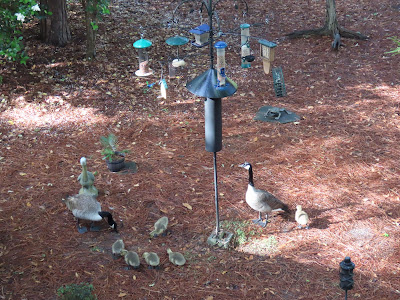




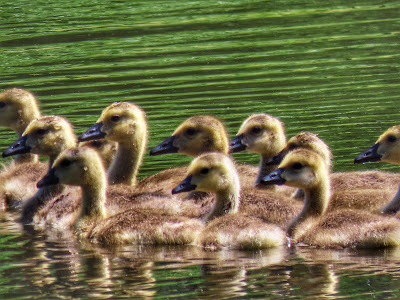










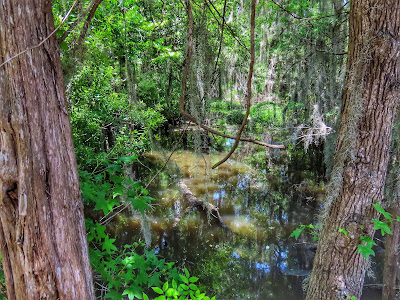


No comments:
Post a Comment